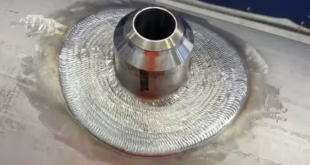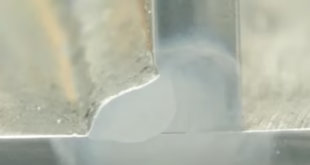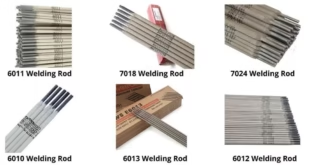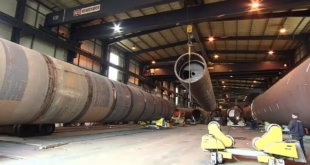Introduction
Pipeline welding is a specialized branch of welding that involves joining sections of pipes to create pipelines, which are essential for the transportation of fluids such as oil, gas, water, and chemicals. This technique is critical in numerous industries, including oil and gas, water supply, chemical processing, and construction.
Definition of Pipeline Welding
Pipeline welding refers to the process of joining two or more sections of pipe to form a continuous, secure, and leak-proof conduit. This type of welding requires skilled welders who are capable of working with various materials and in different conditions. The primary objective is to ensure the welded joints are as strong and durable as the pipes themselves, to withstand internal pressures and environmental stresses.
Basics of Pipeline Welding
Pipeline welding is a vital process in the construction and maintenance of pipelines, which are essential for transporting various fluids and gases. Understanding the basics of pipeline welding is crucial for appreciating its complexity and significance in multiple industries.

Definition and Purpose
Pipeline welding is the process of joining sections of pipe to create a continuous, secure, and leak-proof conduit. The purpose of pipeline welding is to ensure that these joints are as strong and durable as the pipes themselves. This ensures the safe and efficient transport of fluids such as oil, gas, water, and chemicals. The integrity of these welds is critical to prevent leaks, ensure safety, and maintain the functionality of the pipeline over its operational lifespan.
Types of Pipelines
Pipelines are used in various industries to transport different types of fluids. The primary types of pipelines include:
- Oil Pipelines: These pipelines transport crude oil from extraction sites to refineries and refined products to distribution centers. Oil pipelines often cover long distances and require robust welding techniques to handle the pressure and prevent leaks.
- Gas Pipelines: Natural gas pipelines carry gas from production sites to consumers and industrial users. These pipelines must be welded to withstand high pressure and ensure the safe delivery of gas.
- Water Pipelines: These pipelines supply clean drinking water from treatment plants to homes, businesses, and industrial facilities. Welding ensures that water pipelines are leak-proof and resistant to contamination.
- Chemical Pipelines: In chemical processing plants, pipelines transport various chemicals and raw materials. The welding of these pipelines must prevent leaks and withstand the corrosive nature of the transported substances.
- Sewage and Drainage Pipelines: Used in municipal and industrial settings, these pipelines carry wastewater and sewage to treatment facilities. Proper welding prevents leaks and environmental contamination.
Materials Used in Pipeline Welding
Different materials are used in pipeline construction, each requiring specific welding techniques and considerations:
- Steel: The most commonly used material for pipelines, steel is known for its strength, durability, and ability to handle high pressures. Various types of steel, such as carbon steel and stainless steel, are used depending on the application. Carbon steel is widely used in oil and gas pipelines, while stainless steel is preferred for its corrosion resistance in chemical and water pipelines.
- Aluminum: Aluminum is used in pipelines where weight is a concern, such as in aerospace and certain industrial applications. It is also used in environments where corrosion resistance is essential. Welding aluminum requires special techniques due to its high thermal conductivity and tendency to form oxides.
- Plastic: Polyethylene and PVC are commonly used for water and sewage pipelines due to their corrosion resistance and flexibility. While these materials are not welded in the traditional sense, they are joined using heat fusion techniques that create strong, leak-proof joints.
- Composite Materials: In some specialized applications, pipelines are made from composite materials that combine the benefits of different materials, such as strength, flexibility, and corrosion resistance. Welding these materials often involves advanced techniques and equipment.
Methods of Pipeline Welding
Pipeline welding employs various techniques and methods, each suited for specific applications, materials, and environments. The choice of method depends on factors such as the type of pipeline, the materials used, and the desired quality and durability of the welds.
Manual Welding
Manual welding methods involve direct control by the welder, making them versatile and adaptable to different situations.
Stick Welding (SMAW)
Shielded Metal Arc Welding (SMAW), commonly known as Stick Welding, is one of the most widely used methods in pipeline welding. It involves using a consumable electrode coated with flux to create the weld. The electric arc between the electrode and the workpiece melts the metal, forming a weld pool that solidifies into a strong joint.
- Advantages: Portable, versatile, and suitable for outdoor and remote locations.
- Disadvantages: Slower than other methods, requires skilled welders, and can produce more spatter.
Oxy-Acetylene Welding
Oxy-Acetylene Welding uses a flame produced by burning a mixture of oxygen and acetylene gas. This flame melts the edges of the pipes, allowing them to fuse together.
- Advantages: Simple and inexpensive equipment, no need for electricity, and suitable for welding thin materials.
- Disadvantages: Limited to low-pressure pipelines and less efficient for large-scale projects.
Semi-Automatic Welding
Semi-automatic welding methods involve the use of machines to assist the welder, improving efficiency and consistency.
MIG Welding (GMAW)
Gas Metal Arc Welding (GMAW), also known as MIG Welding (Metal Inert Gas), uses a continuous wire electrode fed through a welding gun. An inert gas, such as argon or CO2, shields the weld pool from contamination.
- Advantages: High welding speed, reduced spatter, and suitable for long, continuous welds.
- Disadvantages: Requires a constant power supply, and less portable than manual methods.
Flux-Cored Arc Welding (FCAW)
Flux-Cored Arc Welding (FCAW) is similar to MIG welding but uses a tubular wire filled with flux. The flux generates shielding gas during welding, protecting the weld pool.
- Advantages: High deposition rates, good for outdoor welding, and effective on dirty or rusty materials.
- Disadvantages: Produces more smoke and requires more cleanup compared to MIG welding.
Automatic Welding
Automatic welding methods use fully automated systems, offering high precision and efficiency for large-scale projects.
Submerged Arc Welding (SAW)
Submerged Arc Welding (SAW) involves forming an arc between a continuously fed electrode and the workpiece beneath a layer of granular flux. The flux covers the weld pool, preventing contamination.
- Advantages: High deposition rates, deep penetration, and minimal spatter.
- Disadvantages: Limited to horizontal or flat welding positions and requires additional equipment for handling the flux.
Orbital Welding
Orbital Welding is an automated method where the welding head rotates around the pipe, creating a consistent and precise weld. It is commonly used for pipelines with fixed diameters and high-quality requirements.
- Advantages: High precision, repeatability, and excellent weld quality.
- Disadvantages: Expensive equipment and limited flexibility for different pipe sizes.
Specialized Methods
Specialized welding methods are used for specific applications requiring high precision and control.
TIG Welding (GTAW)
Gas Tungsten Arc Welding (GTAW), also known as TIG Welding (Tungsten Inert Gas), uses a non-consumable tungsten electrode and an inert gas shield. This method provides excellent control and produces high-quality welds.
- Advantages: Precise control, clean welds with minimal spatter, and suitable for thin materials.
- Disadvantages: Slower welding speed and requires high skill levels.
Ultrasonic Welding
Ultrasonic Welding uses high-frequency ultrasonic vibrations to join materials. This method is typically used for plastic pipelines and composite materials.
- Advantages: No need for filler materials, fast and clean process, and suitable for delicate or small components.
- Disadvantages: Limited to specific materials and requires specialized equipment.
Pipeline Welding Techniques
Pipeline welding involves various stages and techniques to ensure strong, durable, and leak-proof joints. Each stage of the welding process requires specific techniques to achieve the desired quality and integrity of the weld.
Root Pass Techniques
The root pass is the initial weld that joins the edges of the pipes together. It is crucial for establishing a strong foundation for subsequent weld passes.
- Technique: The welder must ensure proper alignment and fit-up of the pipe sections. The root pass should penetrate the full thickness of the pipe wall without leaving any gaps or voids.
- Considerations: Careful control of heat input and travel speed is essential to avoid burn-through or lack of fusion. The root pass must be smooth and even to provide a solid base for the following weld passes.
Hot Pass Techniques
The hot pass is applied immediately after the root pass to eliminate any remaining slag and refine the weld.
- Technique: The hot pass typically uses slightly higher heat input and faster travel speed than the root pass. It helps to fuse the root pass fully and improve its overall quality.
- Considerations: The hot pass should be performed while the root pass is still hot to ensure proper fusion and minimize the risk of defects. Proper cleaning between passes is essential to remove any slag or impurities.
Fill Pass Techniques
Fill passes are used to build up the weld joint and fill the groove between the pipes. They are applied after the hot pass and continue until the groove is almost filled.
- Technique: Multiple fill passes are usually required, with each pass slightly overlapping the previous one. The welder should maintain a consistent travel speed and heat input to ensure even deposition of the weld metal.
- Considerations: Proper cleaning between each fill pass is critical to remove any slag or impurities that could cause defects. The welder must also avoid excessive heat input to prevent distortion or weakening of the weld joint.
Cap Pass Techniques
The cap pass is the final weld pass that covers and seals the joint. It provides the finished appearance and adds reinforcement to the weld.
- Technique: The cap pass should be smooth and uniform, with slightly higher heat input to ensure proper fusion with the underlying weld passes. The welder should use a weaving motion to achieve a wide and flat weld bead.
- Considerations: The cap pass must be free of defects such as undercutting or excessive convexity. Proper cleaning and inspection between the fill passes and the cap pass are essential to ensure a high-quality finish.
Techniques for Vertical and Horizontal Welds
Pipeline welding often involves different positions, requiring specific techniques for vertical and horizontal welds.
Vertical Welds
- Technique: For vertical welds, the welder typically uses an upward or downward progression. In upward progression, the welder starts at the bottom and moves upward, while in downward progression, the welder starts at the top and moves downward. The choice depends on the welding method and material thickness.
- Considerations: Proper control of heat input and travel speed is crucial to prevent defects such as slag inclusions or lack of fusion. Vertical welding requires a steady hand and precise control to achieve a consistent weld bead.
Horizontal Welds
- Technique: For horizontal welds, the welder moves along the horizontal axis of the pipe. The pipe is usually rotated to maintain a flat position, allowing for easier access and control.
- Considerations: Maintaining a consistent travel speed and heat input is essential to avoid defects. The welder must ensure proper alignment and support to prevent sagging or misalignment of the weld joint.
Common Defects in Pipeline Welding
Pipeline welding must be executed with precision to ensure the structural integrity and longevity of the pipeline. However, several defects can occur during the welding process, potentially compromising the quality and performance of the welded joints. Understanding these common defects and their causes can help in preventing and addressing them effectively.
Porosity
Porosity refers to the presence of small gas pockets or voids within the weld metal. These pockets can weaken the weld and lead to leaks or failure under pressure.
- Causes: Porosity is often caused by contamination of the weld area, including moisture, oil, dirt, or rust on the base metal. Improper shielding gas coverage or using a contaminated electrode can also lead to porosity.
- Prevention: Ensure the welding surface and materials are clean and dry. Use appropriate shielding gas and maintain proper gas flow rates. Store electrodes and filler materials in a dry environment to prevent contamination.
Cracks
Cracks are fractures in the weld metal that can propagate and lead to structural failure. They can occur in various forms, including longitudinal, transverse, and crater cracks.
- Causes: Cracks can result from excessive heat input, rapid cooling, high residual stresses, or improper welding techniques. They are also more likely to occur in materials with high hardness or brittleness.
- Prevention: Control heat input and cooling rates. Use preheating and post-weld heat treatment to relieve residual stresses. Choose suitable welding parameters and techniques for the material being welded.
Incomplete Fusion
Incomplete fusion occurs when the weld metal does not properly fuse with the base metal or the previous weld pass, leaving a gap or void along the weld joint.
- Causes: Insufficient heat input, improper welding angle, or inadequate cleaning of the weld area can cause incomplete fusion. Welding too quickly can also lead to this defect.
- Prevention: Ensure adequate heat input and proper welding technique. Clean the base metal and previous weld passes thoroughly before welding. Adjust travel speed and welding angle to achieve complete fusion.
Slag Inclusions
Slag inclusions are non-metallic solid materials trapped within the weld metal. They can weaken the weld and act as points of stress concentration.
- Causes: Slag inclusions are typically caused by improper cleaning between weld passes or using an incorrect welding technique. Rapid cooling can also trap slag in the weld.
- Prevention: Clean the weld area thoroughly between passes to remove all slag. Use appropriate welding techniques to ensure slag rises to the surface and can be removed easily. Control the cooling rate to prevent slag entrapment.
Undercutting
Undercutting is a groove or depression left at the weld toe, where the base metal is melted away but not adequately filled with weld metal.
- Causes: Excessive heat input, incorrect electrode angle, or high travel speed can cause undercutting. Poor technique and lack of filler material can also contribute.
- Prevention: Adjust heat input and travel speed to prevent excessive melting of the base metal. Use proper electrode angle and technique to ensure adequate filler metal deposition. Inspect and address any undercut areas immediately.
Misalignment and Distortion
Misalignment and distortion occur when the welded pipes are not correctly aligned or when the welding process causes the pipes to warp or bend.
- Causes: Improper fit-up, uneven heat input, and residual stresses can lead to misalignment and distortion. Inadequate clamping and support during welding can also cause these issues.
- Prevention: Ensure proper alignment and fit-up before welding. Use clamps and fixtures to hold the pipes in place. Control heat input and apply welding techniques that minimize residual stresses and distortion.
FAQs
What are the most common pipeline welding methods?
Pipeline welding methods vary based on project requirements and material types. Common methods include:
- Manual Welding: Includes Stick Welding (SMAW) and Oxy-Acetylene Welding.
- Semi-Automatic Welding: Includes MIG Welding (GMAW) and Flux-Cored Arc Welding (FCAW).
- Automatic Welding: Such as Submerged Arc Welding (SAW).
- Specialized Methods: Like TIG Welding (GTAW) and Orbital Welding.
How can one prevent common defects in pipeline welding?
Preventing defects involves:
- Ensuring cleanliness of materials and work area.
- Using proper welding techniques and parameters.
- Implementing preheat and post-weld heat treatments as needed.
- Conducting thorough inspections and quality control measures.
- Providing adequate training and certification for welders.
What are the safety measures to follow in pipeline welding?
Safety measures include:
- Using appropriate Personal Protective Equipment (PPE) like welding helmets, gloves, and clothing.
- Handling equipment and materials safely.
- Ensuring proper ventilation and fume extraction.
- Implementing fire prevention measures.
- Adhering to industry standards and regulations.
How is pipeline welding inspected and tested?
Inspection and testing methods include:
- Visual Inspection for surface defects.
- Radiographic Testing (RT) for internal flaws.
- Ultrasonic Testing (UT) for internal defects using sound waves.
- Magnetic Particle Testing (MPT) for surface and near-surface defects.
- Dye Penetrant Testing (DPT) for surface-breaking flaws.
- Hydrostatic Testing to assess weld and material integrity using pressurized water.
What are the challenges faced by pipeline welders?
Challenges include:
- Adverse environmental conditions like weather and terrain.
- Material variations in thickness, composition, and type.
- Limited access and confined workspaces.
- Safety risks such as electric shock, fume exposure, and fire hazards.
- Skill and training requirements to maintain quality and safety standards.
Conclusion
Pipeline welding is an essential process that underpins the infrastructure of many critical industries. By staying informed about the latest trends, investing in training and technology, and maintaining rigorous safety and quality standards, professionals in this field can ensure the reliability and longevity of pipeline systems.
 Welding of Welders All about Welding and Welders
Welding of Welders All about Welding and Welders



